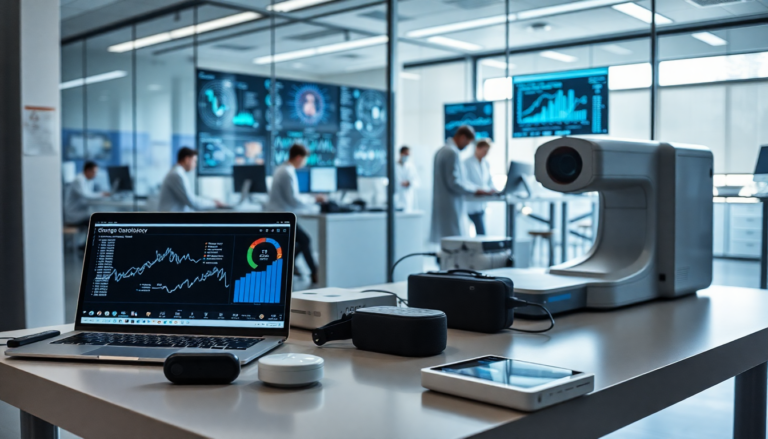Argomenti trattati
Milestones in AI and machine learning for medtech
In 2024, the healthcare technology landscape marked a significant milestone as the number of medtech products receiving FDA clearance surpassed 1,000, illustrating the rapid advancement of artificial intelligence (AI) and machine learning (ML) technologies in this field. Among these, more than 100 products have been designated as Breakthrough Devices, which allows for expedited review processes, flexible clinical trial designs, and enhanced regulatory engagement. This designation not only accelerates the path to market but also positions these innovations as leaders in providing personalized, real-time solutions for clinical decision-making.
The rise of software as a medical device
Software as a Medical Device (SaMD) has emerged as a critical component fueling the growth of AI and ML in medtech. In the past five years alone, SaMD has accounted for a significant share of FDA clearances, including 699 of the 980 510(k) clearances and 22 of the 32 De Novo clearances. Radiology has been a primary beneficiary of this trend, representing approximately 70% of total AI/ML device clearances. However, the adaptability of AI-powered software suggests a shift in this trend, with new reports indicating a greater diversity of applications across various medical specialties.
Patterns of innovation in AI and ML
A recent study by BCG and UCLA Biodesign categorized the surge of AI and ML products into six distinct patterns. These patterns highlight innovations that reduce review times, improve detection through automated image analysis, and leverage decentralized data from wearables and smartphones to enhance disease classification. Healthcare providers are increasingly utilizing AI and ML devices across numerous specialties, particularly in cardiology, where significant advancements have been recorded.
Regional insights into medtech innovation
The United States remains a leader in medtech innovations, accounting for half of all approved devices. Notably, California, particularly the San Francisco Bay Area, contributes 13% of the global share of FDA-approved products. Other regions such as Wisconsin, Pennsylvania, and Tennessee have gained prominence due to hosting major diagnostic imaging companies. In contrast, international hubs like Tel Aviv, Paris, Shanghai, Seoul, and Tokyo collectively contribute around 20% of global medtech advancements, demonstrating a diverse landscape of innovation.
Approval timelines and regulatory challenges
An analysis of 691 AI and ML devices that received FDA 510(k) clearance from 2010 to 2024 revealed that the median time for AI/ML products to gain approval is 133 days, compared to 106 days for traditional medtech devices. This discrepancy highlights the challenges faced by the FDA in regulating software products, particularly given the ongoing learning curve associated with SaMD. Traditional devices benefit significantly from third-party reviews, with median clearance times dropping from 114 days to just 29 days. In contrast, AI/ML products see a modest reduction of only 19 days, underscoring the complexities of approval processes in this rapidly evolving field.
Adaptive logic and generative AI in medtech
Despite the increasing number of AI/ML product approvals, challenges remain regarding the integration of adaptive logic and generative AI (GenAI) in medtech solutions. The FDA mandates that companies submit a predetermined change control plan for AI/ML products utilizing adaptive logic, which has resulted in only three approvals as of Q3 2024. The path for GenAI products is even more challenging, with none receiving FDA clearance to date. However, promising developments include the potential for GenAI to utilize de-identified clinical data to enhance training datasets, offering a way to navigate data privacy issues while ensuring patient safety.
Investor sentiment and market dynamics
A BCG/UCLA Biodesign survey revealed that 68% of medtech executives are optimistic about obtaining approval for their AI/ML products, though only 50% express confidence in successfully commercializing these innovations. Venture capitalists, however, remain bullish, having invested over $14 billion into 387 AI/ML companies since 2010. While funding peaked between 2020 and 2022, it has tapered off in 2023 in response to rising U.S. interest rates.
Evolution of venture capital investments
The nature of venture capital investment in the medtech sector has shifted significantly since 2010. Initially dominated by pre-seed and seed funding rounds, which accounted for 96% of investments in 2013, the focus has since transitioned to Series A through D+ rounds by 2022. This shift reflects the maturation of AI/ML concepts and the necessity for substantial capital to advance toward product approval and commercialization.
Exits and market performance
Among the companies tracked in the study, 58 successfully reached IPO or other exit strategies, though these were relatively rare, with only five IPOs recorded. Notably, companies like United Imaging and PrediLife achieved unicorn status, valued over $1 billion. Most venture capital exits occurred through mergers and acquisitions, often by established medtech giants such as Stryker and Boston Scientific.
Current challenges and future possibilities
The evolving landscape of AI/ML in medtech presents both excitement and caution. Data privacy and ownership rights pose significant challenges for AI investments, especially as regulatory frameworks vary internationally. Major markets like the EU and China have differing regulatory approaches, raising concerns about the global viability of FDA-cleared products.
Building trust in AI/ML healthcare solutions
Ultimately, the widespread adoption of AI/ML-enabled medtech products hinges on building trust among healthcare professionals and patients. Companies must prioritize patient safety and efficacy through robust regulatory compliance, ensuring that the benefits of AI innovations are realized without compromising patient care. As Amy Rees Anderson aptly stated, “Trust takes years to build, seconds to lose, and forever to rebuild.” Medtech leaders must cultivate the right talent and establish clear guidelines to navigate the complexities of this transformative technology.

